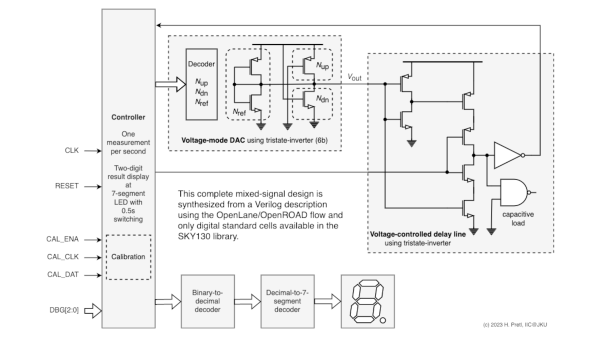We did explicitly ask for projects that use a 555 timer for the One Hertz Challenge, but we weren’t expecting the 555 to be the project. Yet, here we are, with [matt venn]’s Open Source 1Hz Blinky, that blinks a light with a 555 timer… but not one you’d get from Digikey.
Hooking a 555 to blink an LED at one hertz is a bog-simple, first-electronics-project type of exercise, unless you have to make the 555 first. Rather than go big, as we have seen before, [matt venn] goes very small, with a 555 implemented on a tiny sliver of Tiny Tapeout 6.
We’ve covered projects using that tapeout before, but in case you missed it, Tiny Tapeout gives space to anyone to produce ASICs on custom silicon using an open Process Design Kit, and we have [matt venn] to thank for it. The Tiny Tapeout implementation of the 555 was actually designed by [Vincent Fusco].
Of course wiring it up is a bit more complicated than dropping in a 555 timer to the circuit: the Tiny Tapeout ASIC must be configured to use that specific project using its web interface. There’s a demo video embedded below, with some info about the project– it’s not just a blinking LED, so it’s worth seeing. The output isn’t exactly One Hertz, so it might not get the nod in the Timelord category, but it’s going to be a very strong competitor for other 555-based projects– of which we could really use more, hint-hint. You’ve got until August 19th, if you think you can use a 555 to do something more interesting than blink an LED.
Continue reading “2025 One Hertz Challenge: A 555, But Not As We Know It”
















